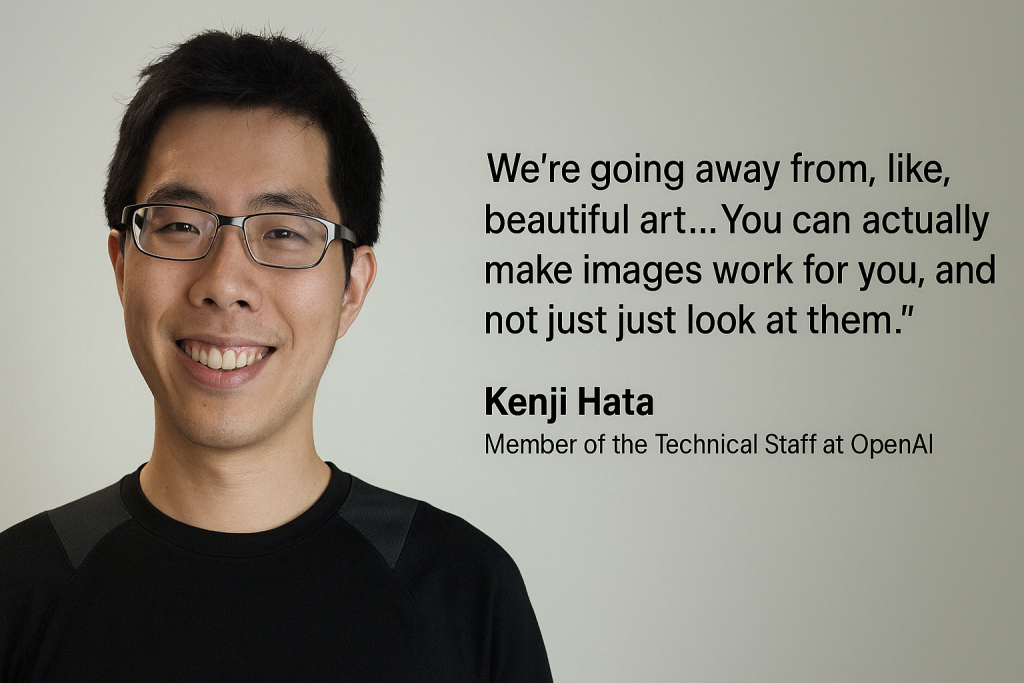
AI image generators are a dime a dozen these days, spitting out bizarre dreamscapes faster than you can say “uncanny valley.” But OpenAI is aiming for something different: practicality. Their new image generator, baked into the GPT-4o model, isn’t just about pretty pictures; it’s about useful pictures. Is this the dawn of AI-powered graphic design, or just another shiny toy?
From Fantasy to Functionality
Remember when AI couldn’t tell its hot dogs from its… well, anything else? That’s because something called “binding” was a major hurdle. AI struggled to understand relationships between objects, like placing a sign above a hot dog cart. This made them more adept at generating abstract art than actual marketing materials.
OpenAI claims their new model is different. Forget distorted text and misplaced objects; this generator can reportedly handle complex layouts, legible text, and even modify existing images. Think accurate recipe cards accompanying cocktail images, comic strips with coherent dialogue, and mock ads that don’t look like they were designed by a caffeinated chimpanzee.
Beyond the Hype: Real-World Applications
OpenAI isn’t shy about who they’re targeting: creative professionals. We’re talking graphic designers, ad agencies, social media managers – anyone who needs visuals, fast. Gabe Goh, lead designer on the project, calls it “a new tool for communication.” Kenji Hata, a researcher, puts it more bluntly: “We’re going away from, like, beautiful art… You can actually make images work for you, and not just just look at them.”
But the path to design world domination is paved with challenges.
The Adobe Elephant in the Room
Adobe, with its Photoshop empire, already has a firm grip on the professional market. They’re also investing heavily in AI, integrating generative tools directly into their existing software. As David Raskino from Irreverent Labs points out, Adobe’s momentum makes it hard to see why professionals would switch.
Is this the Adobe killer? Not likely. Adobe has a product suite honed over decades and deeply embedded in professional workflows.
The Canva Contingent
Then there’s Canva, the darling of casual designers. This platform caters to users who want quick, easy visuals without the complexity of Photoshop. To win over this crowd, OpenAI needs to convince them that its image generator is so good, it’s worth ditching a platform specifically designed for… well, design.
This seems more plausible. For users needing quick visuals, the speed and quality of the OpenAI generator could be a real draw. It might not replace Canva entirely, but it could become an indispensable tool in the arsenal.
The ‘Good Enough’ Factor
Let’s be realistic. Many image generators are currently used for churning out “good enough” visuals for social media. OpenAI’s offering will likely see similar use, providing quick visuals to populate timelines and stories.
However, OpenAI’s ambitions go beyond mere social media fodder. Their massive investments, including the Stargate project, hint at a far grander plan. They clearly envision this image generator as a significant revenue stream, a key component of their future growth.
Raising the Bar (and the Data)
Regardless of its ultimate role, OpenAI’s image generator has pushed the boundaries of what’s possible. It’s forced other AI companies to step up their game.
According to Raskino, achieving this level of performance requires vast amounts of specific data, like millions of images with properly rendered text. Competitors now have to match these achievements to stay relevant.
“The pace of innovation should increase here,” Raskino predicts.
The Verdict?
OpenAI’s new image generator isn’t just about generating pretty pictures; it’s about solving practical problems. It represents a significant step towards AI tools that can be genuinely useful for creative professionals and casual users alike. Whether it can dethrone Adobe or usurp Canva remains to be seen. But one thing is clear: the bar has been raised, and the image generation landscape is about to get a lot more interesting.



Leave a Reply